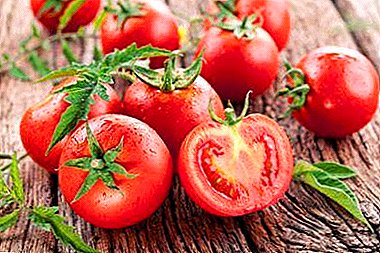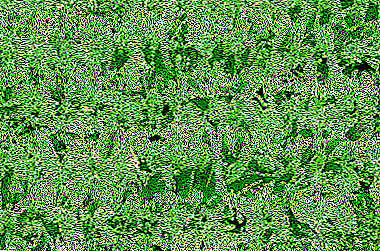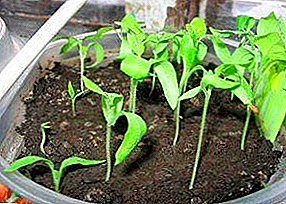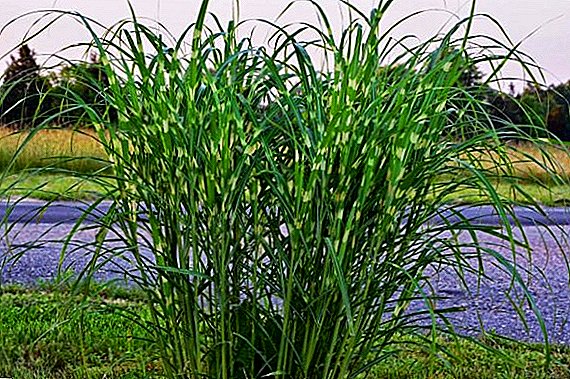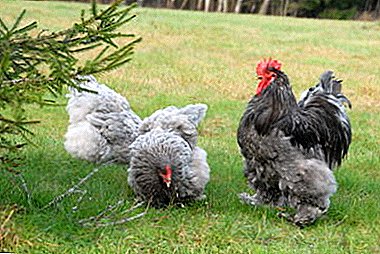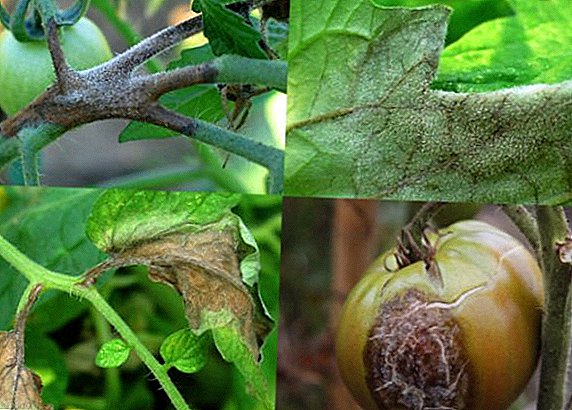 Late blight is one of the most common diseases that affects solanaceous crops. Very often, gardeners are faced with this ailment when growing potatoes and tomatoes. Let's see what the disease is, how to fight it and save the harvest.
Late blight is one of the most common diseases that affects solanaceous crops. Very often, gardeners are faced with this ailment when growing potatoes and tomatoes. Let's see what the disease is, how to fight it and save the harvest.
Description
Fungal disease late blight is also called potato rot or brown rot.. The disease is dangerous because it progresses very quickly and in a short time can spread to the entire crop.  The development cycle of late blight First of all, it is the potato that gets sick, and after 10-15 days, the fungus also infects tomatoes. It manifests itself in the form of spots on the aboveground parts of plants, fruits and tubers.
The development cycle of late blight First of all, it is the potato that gets sick, and after 10-15 days, the fungus also infects tomatoes. It manifests itself in the form of spots on the aboveground parts of plants, fruits and tubers.
Read more about what to treat and how to deal with pests of tomatoes, potatoes, how to prevent and fight against late blight of potatoes, as well as which varieties of tomato are resistant to late blight.
Epidemic outbreaks of this disease are directly related to bad weather conditions: a rainy summer with significant changes in day and night temperatures is the best time for the fungal activity.
Determined by symptoms
This fungal disease can occur in different ways, depending on the pathogen that provoked it, as well as climatic conditions.
The main signs of the presence of phytophtora are considered to be the following:
- On the foliage of plants, spots of brown or brown color with white edging are formed.
- Bottom sheet plate is covered with whitish spider patina.
- Yellowing, folding, drying and subsequent dying off of the foliage.
- Stems and petioles are covered with brown spots that grow at lightning speed and affect the entire tops of the plant.
- Rotting stems.
- Darkening and then shedding of flowers and ovaries.
- On the fruits of tomatoes manifested in the form of spots, which subsequently provoke softening and rotting of tomatoes.
- Tubers of potatoes are covered with dense spots.
 Tomatoes affected by photofluorosis
Tomatoes affected by photofluorosisImportant! The incubation period of late blight varies from 7 to 10 days.
How is transmitted and multiplied
The development of phytophtoras is promoted by several factors, first of all - these are unfavorable weather conditions, namely, sudden changes in temperature and excessive humidity..
Long fog, heavy dew and rain often cause plant contamination. 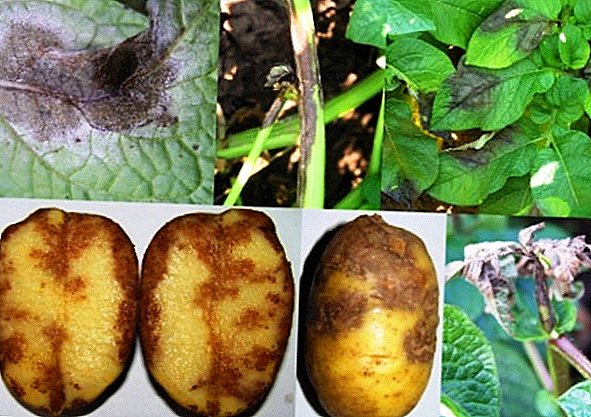 Signs of phytophthora in potatoes Poor-quality planting material or infected soil can also be the source of this disease.
Signs of phytophthora in potatoes Poor-quality planting material or infected soil can also be the source of this disease.
Another reason for the occurrence of phytophthora is the wrong agrotechnology, in particular, too thick plantings and the presence of weeds on the site.
Important! When choosing planting material, preference should be given to varieties that are resistant to late blight.
How to fight
To defeat this disease is quite difficult. Timely diagnosis is of great importance, because if you start a disease, the crop can not be saved.
It is possible to treat and prevent the fungus in several ways, what exactly - let's consider.
Preparations
Fungicides are suitable for controlling late blight; these preparations contain copper, which is effective against the fungus:
- copper sulphate. 20 days after germination, the plants are treated with a 0.02% solution of the drug. The procedure is repeated during the flowering period;
- Bordeaux liquid. Potatoes and tomatoes are treated with a 1% solution of this substance 20 days after the emergence of sprouts, and then during flowering;
- "Ridomil Gold". Used for processing plants from phytophthora before flowering at the rate of 25 g of the drug per 100 square meters. m;
- "Revus". Before the appearance of the first culture buds, they are treated at the rate of 6 ml per 100 sq. M. m;
- "Bravo". A potent fungicide, it is used when there is a threat of late blight epidemic. In such cases, the planting process at the rate of 20 ml of the drug per 100 square meters. m

Important! The processing of tomatoes with fungicides, provided that it is necessary to preserve the harvest, is carried out no later than 21 days before the fruit ripens.
Folk methods
Experienced gardeners argue that there are many safe methods of dealing with this disease, the use of which is allowed at all stages of the growing season and allows you to save plants and crops. Let's consider the most effective:
- Milk with iodine. In 10 liters of milk, you must add 30-40 drops of iodine and spray the plants with the mixture. You can also use for this purpose serum.

- Garlic infusion. To make it, you need to chop 10-15 cloves of garlic and add 10 liters of water to them. The garlic-garlic mixture is left to infuse for 10-12 hours, then filter and spray the plants affected by blight.
- Solution of garlic and potassium permanganate. 1.5 Art. chopped garlic is mixed with 1.5 g of potassium permanganate and pour 10 liters of water. Then spray the aboveground part of the plant.
- A solution of iodine and potassium chloride. 30 g of potassium chloride and 40 drops of iodine must be dissolved in 10 l of water. The resulting mixture is used for irrigation at the rate of 0.5 liters per tomato bush or potato.
Read also about effective folk remedies for phytophtora on tomatoes.
Tillage
In order to minimize the likelihood of late blight, the soil should be properly prepared before planting tomatoes and potatoes.
To do this, in the spring it is imperative to clear the area of young and last year's growth and loosen the soil well.  After that, the soil must be disinfected, it can be done with the help of chemicals or folk remedies.
After that, the soil must be disinfected, it can be done with the help of chemicals or folk remedies.
Any copper-containing preparations are suitable for disinfecting the soil; treatment should be carried out 2-3 weeks before the intended planting. Experienced gardeners also use wood ash and a weak solution of potassium permanganate for this purpose.
Treatment and Prevention
Unfortunately, 100% protection against phytophthora does not exist, but the implementation of preventive measures before and after planting plants significantly reduces the likelihood of its occurrence.
To prevent the disease using chemical and biological products. It is important to understand that chemistry can not be used during all periods of the growing season, since potent substances can penetrate the fruit and thus make the crop dangerous to health.
Did you know? One of the reasons for the famine in Ireland in 1845-1849, when more than a quarter of the island’s population died, is considered to be late blight, which destroyed almost the entire potato crop, and at that time it was the staple food of the Irish people.
As for biopreparations, they can be used at almost any stage of plant development, without fear of adverse effects on the fruit and the environment.
On tomatoes
To prevent the occurrence of phytophthora on tomatoes, the following measures should be taken:
- Choose for planting only high-quality, healthy material.
- Disinfect seeds before sowing in a 1% solution of potassium permanganate for 20-30 minutes.
- Plant tomatoes away from potatoes.
- Observe the distance between the bushes, thickened plantings contribute to the emergence and development of the disease.
- Apply phosphorus-potassium fertilizers regularly.
- Do not over saturate the soil with nitrogen.
- Make good drainage that will prevent fluid from stagnating.
- Planted in sunny areas.
- Follow the recommendations of experts regarding crop rotation.
- Mulch the soil.
- Plant plants siderats.
Video: prevention of late blight on tomatoes
Seedlings before planting in the open ground must be sprayed with copper sulfate or Bordeaux mixture. After 14 days the bushes are re-sprayed on the garden bed.
Read more about what siderata fit tomatoes for higher yields.
Any chemical preparations for the treatment of tomatoes are allowed to use at least 3 weeks before the intended ripening of the fruit.
Therefore, experienced vegetable growers are more likely to use folk remedies rather than fungicides for the treatment of late blight of tomatoes.
On potato
As prevention of phytophthora on potatoes, one should adhere to the following recommendations:
- It is recommended to take only healthy tubers for planting; as a test for the presence of fungus, it is recommended to stand in a warm room with a temperature of 15-18 ° C for 10-15 days before planting. If the potato is infected, putrid spots will appear on it.
- Do not land solanaceous crops in the neighborhood.
- Avoid thickened landings.
- Give preference to varieties resistant to phytophthora.
- To carry out preventive spraying with fungicides or biological preparations every 2 weeks from the very beginning of the growing season.
- Follow the rules of agricultural engineering, namely, loosening the soil and weeding from weeds.
- Apply phosphorus-potassium fertilizers regularly.
Video: how to protect potatoes from late blight
One of the most important points in garden care is weed removal. Learn more about the most common weeds, as well as how to deal with them with folk remedies, special tools and herbicides.
This fungus belongs to incurable diseases, so all the actions of the gardener should be aimed at preventing the development and spread of phytophthora. To do this, carry out the processing of fungicides according to the instructions for use.
On other cultures
Late blight affects not only potatoes and tomatoes, but also other solanaceous. Often, it suffers from pepper and eggplant. For the treatment of these cultures, fungicides are used, just like tomatoes, they are sprayed with solutions of such chemicals.
When growing vegetables in a greenhouse, cucumbers can suffer from the disease, so it is extremely important to control the level of moisture in the room and prevent the development of the disease. To treat cucumbers can only folk remedies aimed at combating late blight.  Blight on cucumbers
Blight on cucumbers
Did you know? Despite the fact that many people say that tomatoes and potatoes affected by this disease cannot be eaten, in fact, no research has been conducted on the subject of eating such fruits. There are only suggestions that this should not be done, even for aesthetic reasons, because the stains that cover such vegetables do not look appetizing at all. But to eat or not eat them, everyone decides for himself.
Late blight is a common dangerous fungal disease. The best way to deal with it is to try to prevent it from appearing in your garden, and for this you should follow the rules of agrotechnology, which are shown to the nightshade.
Feedback from network users





